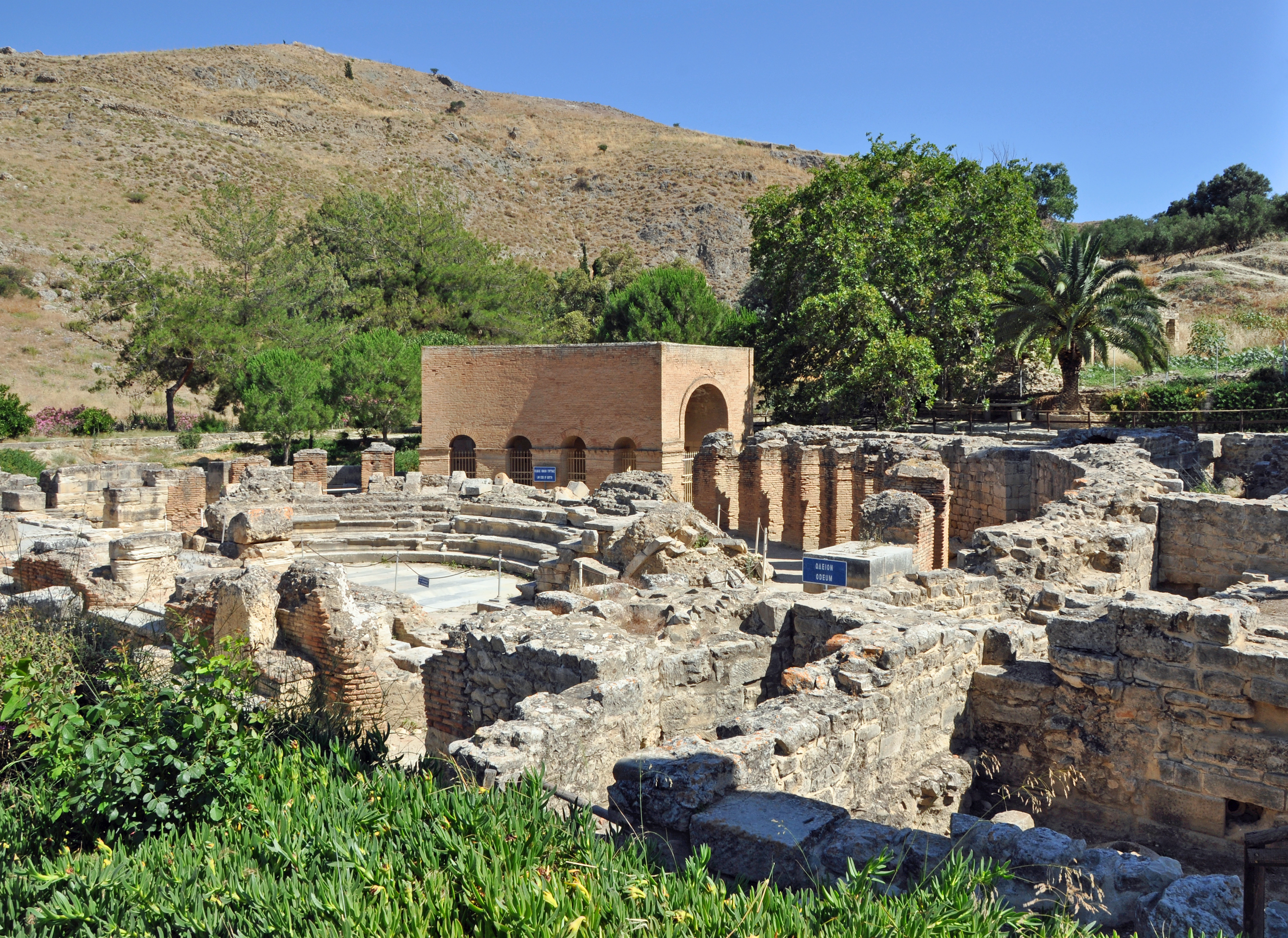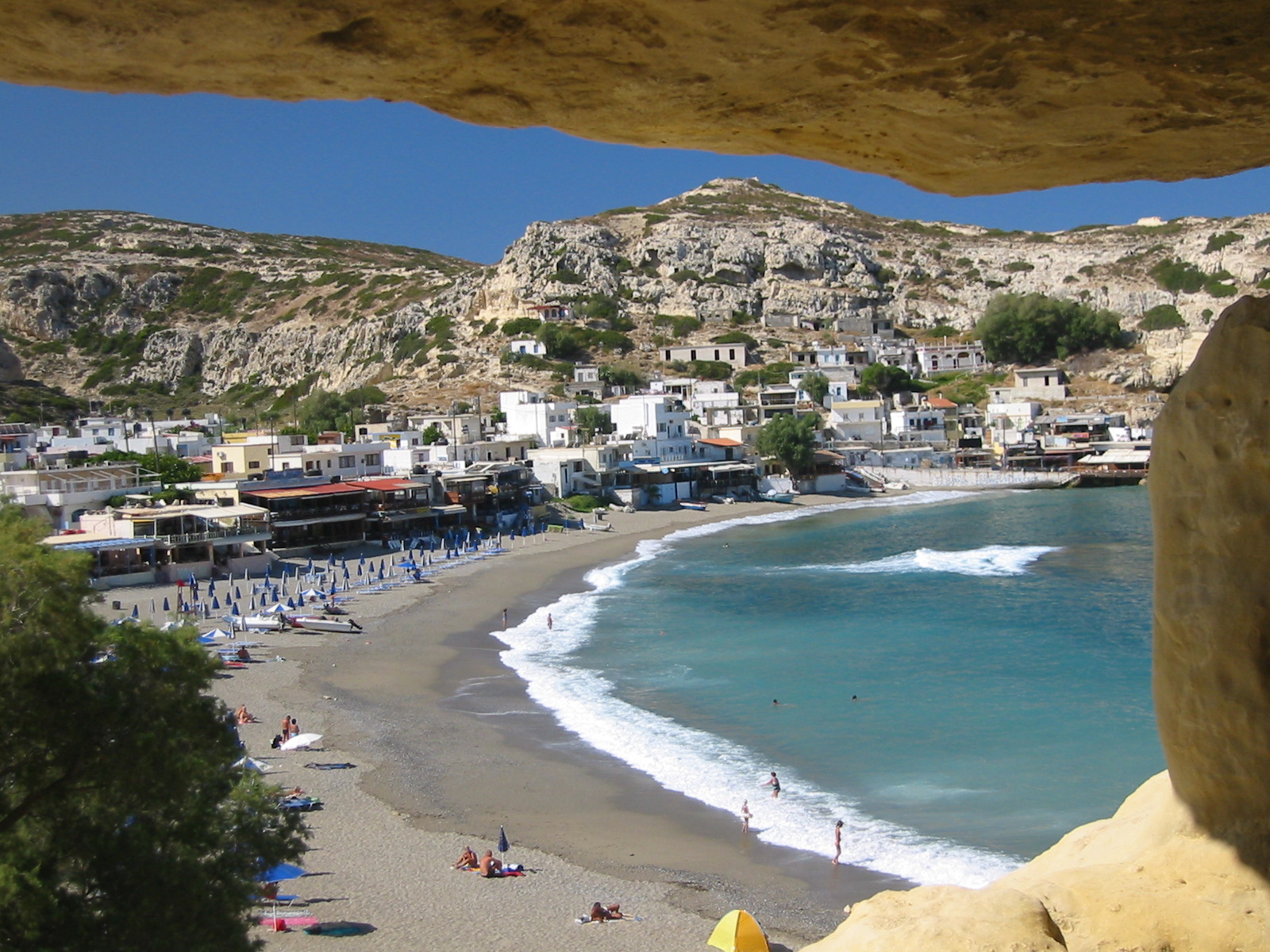|
Metallum
Matalia ( grc, Ματαλία) was a town of ancient Crete near the headland of Matala (Μάταλα), and probably the same place as the port and naval arsenal of Gortyna called Metallum or Metallon (Μέταλλον) by Strabo Strabo''Strabo'' (meaning "squinty", as in strabismus) was a term employed by the Romans for anyone whose eyes were distorted or deformed. The father of Pompey was called "Pompeius Strabo". A native of Sicily so clear-sighted that he could see .... Its site is located near modern Matala. References Populated places in ancient Crete Former populated places in Greece {{AncientCrete-geo-stub ... [...More Info...] [...Related Items...] OR: [Wikipedia] [Google] [Baidu] |
Gortyna
Gortyna ( grc, Γόρτυνα; also known as Gortyn (Γορτύν)) was a town of ancient Crete which appears in the Homeric poems under the form of Γορτύν; but afterwards became usually Gortyna (Γόρτυνα). According to Stephanus of Byzantium it was originally called Larissa (Λάρισσα) and Cremnia or Kremnia (Κρήμνια). History This important city was next to Cnossus in importance and splendour; in early times these two great towns had entered into a league which enabled them to reduce the whole of Crete under their power; in after-times when dissensions arose among them they were engaged in continual hostilities. It was originally of very considerable size, since Strabo reckons its circuit at 50 stadia; but when he wrote it was very much diminished. He adds that Ptolemy Philopator had begun to enclose it with fresh walls; but the work was not carried on for more than 8 stadia. In the Peloponnesian War, Gortyna seems to have had relations with Athens. In ... [...More Info...] [...Related Items...] OR: [Wikipedia] [Google] [Baidu] |
Ancient Crete
The history of Crete goes back to the 7th millennium BC, preceding the ancient Minoan civilization by more than four millennia. The palace-based Minoan civilization was the first civilization in Europe. After the Minoan civilization was devastated by the Thera eruption, Crete developed an Ancient Greece-influenced organization of city-states, then successively became part of the Roman Empire, the Byzantine Empire, the Venetian Republic, the Ottoman Empire, an autonomous state, and the modern state of Greece. Prehistoric Crete In 2002, the paleontologist Gerard Gierlinski discovered what he claimed were fossil footprints left by ancient human relatives 5,600,000 years ago, but the claim is controversial. Excavations in South Crete in 2008–2009 revealed stone tools at least 130,000 years old. This was a sensational discovery, as the previously accepted earliest sea crossing in the Mediterranean was thought to occur around 12,000 BC. The stone tools found in the ''Plakias'' reg ... [...More Info...] [...Related Items...] OR: [Wikipedia] [Google] [Baidu] |
Stadiasmus Maris Magni
The ''Stadiasmus Maris Magni'' ( grc, Σταδιασμός ήτοι περίπλους της μεγάλης θαλάσσης) is an ancient Roman periplus or guidebook detailing the ports sailors encounter on the shores of the Mediterranean Sea. The ''stadiasmus'' provides distances, sailing directions and descriptions of specific ports. It was written in Ancient Greek and survives in fragments. The work was written by an anonymous author and is dated to the second half of the third century AD. The most complete Greek text together with a Latin Latin (, or , ) is a classical language belonging to the Italic branch of the Indo-European languages. Latin was originally a dialect spoken in the lower Tiber area (then known as Latium) around present-day Rome, but through the power of the ... translation was published in 1855 by Karl Müller as part of his work '' Geographi Graeci Minores''. Karl Müllerbr>Anonymi Stadiasmus maris magniGeographi Graeci minores . Vol. 1, p. 427 ... [...More Info...] [...Related Items...] OR: [Wikipedia] [Google] [Baidu] |
Strabo
Strabo''Strabo'' (meaning "squinty", as in strabismus) was a term employed by the Romans for anyone whose eyes were distorted or deformed. The father of Pompey was called "Pompeius Strabo". A native of Sicily so clear-sighted that he could see things at great distance as if they were nearby was also called "Strabo". (; el, Στράβων ''Strábōn''; 64 or 63 BC 24 AD) was a Greek geographer, philosopher, and historian who lived in Asia Minor during the transitional period of the Roman Republic into the Roman Empire. Life Strabo was born to an affluent family from Amaseia in Pontus (in present-day Turkey) in around 64BC. His family had been involved in politics since at least the reign of Mithridates V. Strabo was related to Dorylaeus on his mother's side. Several other family members, including his paternal grandfather had served Mithridates VI during the Mithridatic Wars. As the war drew to a close, Strabo's grandfather had turned several Pontic fortress ... [...More Info...] [...Related Items...] OR: [Wikipedia] [Google] [Baidu] |
Matala, Crete
Matala (Greek language, Greek: Μάταλα) is a village located 75 km south-west of Heraklion, Crete, Greece. Matala is part of the community of Pitsidia within the municipal unit of Tympaki, Faistos municipality, Heraklion (regional unit), Heraklion regional unit. History The Dugout (shelter), artificial caves in the cliff of the Matala bay were created in the Neolithic Age. Matala was the port of Phaistos during the Minoan civilization, Minoan period. In the year 220 BC, Matala was occupied by the Gortynians, and during the Roman period, Matala became the port of Gortys. It has been suggested that the caves were once used as tombs, but it is more likely that they were used as living spaces, given their volume (corpses do not need that much room to walk around). One of the caves is called "Brutospeliana" because according to the legend it was frequented by the Rome, Roman general Brutus. Matala was then a fishing village. In the 1960s, the caves were occupied by h ... [...More Info...] [...Related Items...] OR: [Wikipedia] [Google] [Baidu] |
Populated Places In Ancient Crete
Population typically refers to the number of people in a single area, whether it be a city or town, region, country, continent, or the world. Governments typically quantify the size of the resident population within their jurisdiction using a census, a process of collecting, analysing, compiling, and publishing data regarding a population. Perspectives of various disciplines Social sciences In sociology and population geography, population refers to a group of human beings with some predefined criterion in common, such as location, race, ethnicity, nationality, or religion. Demography is a social science which entails the statistical study of populations. Ecology In ecology, a population is a group of organisms of the same species who inhabit the same particular geographical area and are capable of interbreeding. The area of a sexual population is the area where inter-breeding is possible between any pair within the area and more probable than cross-breeding with ind ... [...More Info...] [...Related Items...] OR: [Wikipedia] [Google] [Baidu] |




